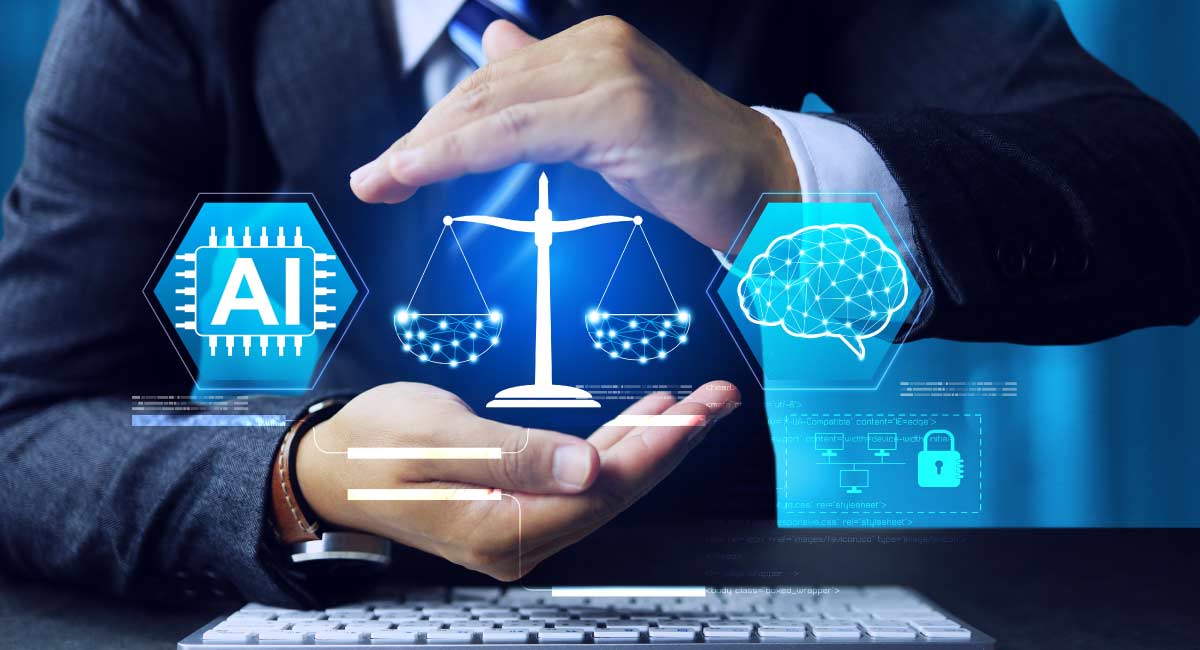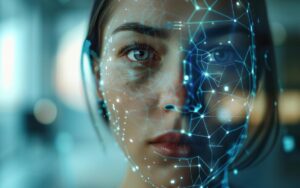Let’s say you are an AI programmer working on your next big development project. Suddenly, the project encounters a serious roadblock, as stakeholders are concerned that the data you use will infringe on user privacy. Your work and the money you invested in the project seem to be going down the drain, and your organization has reservations about letting the project continue.
As AI capabilities accelerate, this story may resonate with more people working on AI development in the coming years.
Aspiring AI professionals need to understand the impact their development may have on society. This is also a spectacular opportunity for many to explore a new career path—that of an AI ethicist. So, read on as we take you through the basics of ethics in AI, their critical nature, principles, and best practices.
Along with learning how to establish ethical AI policies, you will also discover the importance of selecting a comprehensive AI ML bootcamp to make sensible choices as an AI professional.
What are Ethics in AI, or Ethical AI?
AI ethics refers to the moral principles organizations use to dictate AI’s fair and responsible use and development. They are the principles that the employees, employers, government officials, and other stakeholders follow to ensure that they use AI humanely and harmlessly. This is essential as AI gives an output based on the input it is programmed to collect.
For example, an AI-assisted hiring software program was revealed to be biased against female candidates because it was trained on historical data primarily focused on male candidates.
Another example is the generation of movie scripts using AI. There has been a massive backlash in the US against this practice, as the AI uses data from existing scripts and generates a new one. Thus, the writers do not get any credit, and AI also eliminates the concept of individuality and creativity from the art.
A third example that is becoming extremely common is students using ChatGPT to generate summaries of research papers without bothering to read them. ChatGPT cannot customize the summaries as per the requirements and cannot contribute personal learning, so it raises the question of whether this could be cheating as the students are not doing the required work.
Also Read: The Double-Edged Sword of AI Deepfakes: Implications and Innovations
The Increasing Criticality of Ethics in AI
AI ethics has assumed a more significant role in AI development in the last year with the boom in commercially available AI tools. As an increasing number of issues surface daily, businesses are scrambling to regulate the use of AI in their operations. Here’s why ethical AI is critical for them.
- The unethical use of AI can result in huge lawsuits and a massive loss of finance and reputation
- Non-compliance with the governmental regulations can result in significant legal penalties
- Programming AI to develop only necessary data is crucial. Collecting data unbeknownst to the user is a direct violation of privacy
- Ethical AI practices can boost product quality and safety and increase credibility with customers.
- Sharing private information, such as browsing data and IP addresses, to third parties can compromise customers
- AI ethics are essential, as humans handling AI need to be aware of its limitations. This will prevent humans from believing the output blindly.
- Compliance with ethics regulations ensures the AI program has enough security measures to prevent malicious manipulation and potential data breaches
Principles for AI Ethics
A few common principles for AI ethics need to be addressed every time AI is used. Let’s take a look at some of them.
- Privacy: Sensitive personal information must be protected and respected.
- Transparency and accountability: AI must be programmed to be open and responsible about its process.
- Fairness: Intentional or unintentional bias due to historical data must be removed.
- Freedom and autonomy: AI must not infringe upon human rights and liberties.
- Beneficence: AI must be used to do good for the human race, and the risks involved must be reduced.
- Trust: The AI systems must be robust, secure, and reliable enough for the public to trust them.
- Dignity: AI algorithms must be programmed to respect human worth and avoid dehumanizing actions.
- Sustainability: AI design must be sustainable and environmentally conscious.
- Solidarity: AI developers must consider its implication on society as a whole.
- Non-maleficence: AI designs must not be harmful to humans.
Other than these, some principles of misuse, moral agency, value alignment, plagiarism, etc., require AI’s ethical use.
Also Read: Performance Modeling: What is an ROC Curve?
How to Establish AI Ethics
As an AI ethicist, you will guide an organization in framing the ethics policy. Here’s how you can establish comprehensive AI ethics.
- Define the policy’s objectives and the standards the organization needs to comply with
- Identify the legal, social, and ethical risks and potential problems in the AI projects
- Communicate this to the development team, who can account for the issues during the development process. For example, the requirements for AI ethics are entirely different in the healthcare sector from those in the e-commerce sector.
- Arrange optimization tools and guidance manuals for product managers and team leads
- Assess the AI systems for fairness and recommend modifications to enhance their trustworthiness.\
- Implement strategies to eliminate bias resulting from algorithms and data processing
- Frame methods to ensure transparency of AI systems
- Employ stringent paradigms for better data-safeguarding
- Ensure compliance with governmental regulations
- Incentivize the process of implementing AI ethics to ensure increased employee engagement
Ethical Challenges of AI
Several ethical challenges of AI surface every day as the use of AI rises in every sector. Here are some of the critical difficulties observed in daily life.
- Plagiarism: AI is a program that uses data created by humans. Hence, it may be deemed plagiarism if it generates an output based on such data without crediting the original creators, for example, creating a song using clips from original music made by musicians.
- Bias: Using data with obvious or unintentional bias can throw an AI off and produce undesirable results. For example, a dataset that misses a single ethnic group can be biased against that group.
- Fear of unemployment: Overly using AI can result in job displacements for certain sectors. For example, creating AI content can mean fewer jobs for human writers.
- Insufficient data: Insufficient input data can result in faulty AI output, such as basing the design of a political campaign for an entire state on data from only two cities.
- Environmental impact: AI models consume substantial energy during data training. They need to be made more energy-efficient.
- Reducing human interactions: AI bots disguised as online friends can lead to humans preferring bots over human interaction and influence them to indulge in anti-social behavior.
- Inaccurate solutions: Feeding a preferred data set can influence the AI model to give the solution we want rather than the correct one. Hence, depending solely on AI without human observation can lead to faulty results and disastrous implications.
Also Read: Exploring the Artificial Intelligence Career Path
Best Practices of Ethical AI
Developing a sustainable AI ethics policy is excellent, but following certain best practices can make it work effectively. Here is what you can do.
- Consider your industry’s specific requirements while framing the AI ethics. Do not use a one-size-fits-all formula; customize it to address the concerns of that sector.
- Collaborate with the right teams in the firm to include every possible issue in the framework
- Be proactive in identifying and addressing the concerns of the stakeholders
- Ask the development team for help to devise solutions to potential ethical problems
- Spread awareness about the AI ethics policy in the organization
- Ensure every team member knows the compliance and regulatory standards and their requirements
- Arrange training programs for employees and users to share guidelines and information about the organizational ethical AI policy
- Dedicate a separate part of every project to evaluate the project output for its ethical implications and their resolution
- Implement regular auditing of the AI projects that have been released and put into operation. Sometimes, a few flaws may go unnoticed until the audience uses the program on diverse systems. Regular auditing will help track the progress of the usage and the issues to be addressed in upcoming updates.
- Ensure that every AI bot has a human reviewing the chats daily. Otherwise, users will keep typing their concerns into a black hole without human review.
Explore More About Ethical AI and Other Key Concepts
AI is everywhere, and businesses are eager to integrate it into their operations and products. However, any hint of legal complications arising from AI features is a red flag they strive to avoid. This has increased the demand for well-rounded AI specialists with in-depth knowledge of AI development and the methods to circumvent ethical pitfalls.
If you aspire to become an AI specialist, this online AI ML program is an excellent first step toward a career in this field. This bootcamp covers essential concepts such as generative AI, explainable AI, prompt engineering, fine-tuning, ethical considerations, and the future of generative AI. You will get training in high-demand skills like data model development, natural language processing, ensemble methods, and speech recognition.
Enroll today to connect with industry experts and enhance your career by adding Capstone projects to your portfolio.
You might also like to read:
What Is a Generative Adversarial Network? Types, How They Work, Pros, and Cons
What Is Transfer Learning in Machine Learning?
What is Reinforcement Learning in AI?
What is Sustainable AI? Definition, Significance, and Examples






